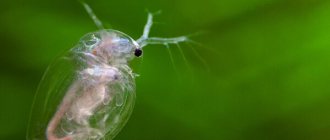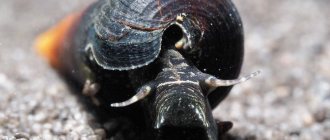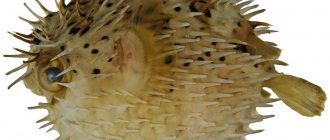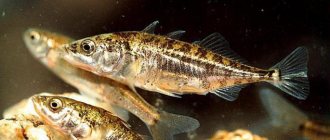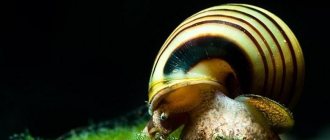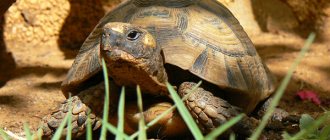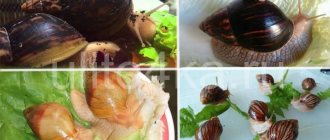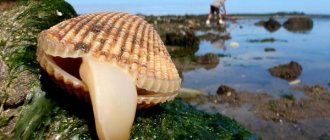In total, there are about 110 thousand species of snails in the world, of which about 2000 are found on the territory of the Russian Federation. The most terrible and dangerous snail is called Geographical cone . The danger lies in the ability to produce such an amount of toxins that can kill up to ten people. It works using a cloud that contains a huge amount of insulin and, when inhaled into the blood, instantly lowers the amount of sugar in a person’s blood. An antidote for these toxins has not yet been found.
Also very noteworthy is the snail Angustopila dominikae, which has a body size of only 0.8 millimeters. You can fit 4 of these clams into one eye of a needle. And the largest species of snail is the Australian gastropod. The weight of this representative reaches 18 kilograms. It was classified as a predator that settled 30 meters deep in Australia, Indonesia and New Guinea.
In total, there are three classes of these mollusks:
- marine;
- land;
- freshwater
In parallel, there are pulmonate and gill snails.
Snail habitat
The snail is often found on a continent that can provide it with high humidity.
She will feel optimally good in Europe, Africa or America. You can meet it in Russia or Asia. It does not live only in deserts and areas with eternal ice.
Top 10 largest snails in the world
Snails are called gastropods with an external shell. These are the slowest organisms on the planet.
There are 2 large classes of these animals - land and sea organisms. Moreover, each representative of these classes has its own unique dimensions and structural features.
The list of the largest snails in the world includes:
Rumina decollata
The species was introduced to Europe from North America. The species has flourished especially well in the Mediterranean region. This is a nocturnal herbivore. During the day, such a snail can also be seen.
This happens very rarely, mainly in rainy weather. In winter, it falls into a suspended state. The species is characterized by a variety of forms and originality of appearance.
Grape snail (Helix pomatia, in Latin)
The mollusk has a shell on top, the size of which ranges from 3 to 5 cm. The basis of the animal’s diet is various plants and tree leaves. In winter, snails cannot be seen - for all 3 months of cold weather, the organisms go into “hibernation”.
Negative impacts and dangers
Despite their inconspicuousness, snails are a tasty addition to fish, crayfish, thrushes or moles, hedgehogs, and wild boars.
Storks, herons, and frogs can also attack. The animal is saved due to its slowness; it also does not appear in heavily lit areas, hiding in the grass.
However, in addition to external enemies, the snail may encounter disease. Reason for concern: white coating on the sink, burn, poisoning. Other dangers include a broken shell, prolapsed organs, or self-gnawing.
Types of snails
There are about 110 thousand species and subspecies of the snail. At the same time, 2,000 live in Russia.
The poisonous snail lives in the Pacific Ocean, its name is Geographical Cone.
Make no mistake about it, releasing a huge dose of insulin could be fatal for 10 people. If you are going on vacation to the Pacific or Indian Ocean coast, it is better to familiarize yourself with the photo of the snail in advance.
The smallest member of this society does not even reach 1 cm. Four individuals of Angustopila dominikae easily fit in the eye of a needle.
The large mollusk is the giant Australian whelk, weighing up to 18 kg and up to 1 m long. A predator that lives in northern Australia, Indonesia or Papua New Guinea.
It is worth paying attention to the species that live on our territory.
Unusual specimens and the rarest species
The previously described individuals are often found along the routes of avid travelers and in the aquariums of Russian breeders. But there are very unusual snails that can only be seen in the dark waters of the ocean or in cold caves.
Butterfly snail or Limacina helicina
It easily survives in the icy waters of the Arctic and Antarctic. The second name of this unusual creature is pteropod, and this sonorous name reflects the manner of movement of the deep-sea mollusk. The translucent snail butterfly does not crawl along the bottom like its other gastropod counterparts, but gracefully soars in the depths, following the fast ocean currents. Wise Mother Nature awarded the beauty with beautiful wings so that she could easily hunt fast-moving plankton.
Iron snail (Crysomallon squamiferum)
This species was discovered by scientists in 1999. In the Indian Ocean
At a depth of 3 kilometers lives a real knight in shining armor. The shell of this unusual mollusk is covered with plates of metals and sulfides. From an early age, individuals obtain the necessary materials from rich thermal springs. The iron hive is the only creature in the world whose skeleton is built on metal joints. The leg of the exotic mollusk is covered with plates - pyrite sclerites, and the protected mollusk probes the surrounding space with short pink tentacles.
Croatian Cave Snail (Zospeum tholussum)
More recently, it was discovered by zoologists at a depth of 915 meters. The creature is very strange and resembles a small clot of moving mucus. The transparent snail has no visual organs and practically no coloring pigment is produced. But this slow-moving mollusk, living in the dark, does not need these important adaptations for others. The tiny creature is content with its surroundings, eats mushrooms and lichens, and uses the drainage system of underground caves to spread the species.
White gibberulus (Gibberulus gibberulus)
This little one lives only on the Australian Barrier Reef, but has already become famous among researchers and experienced breeders. White gibberulus is also called the jumping clam. The daredevil prefers not to sit in a protective shell, but simply to run away from the impending danger. After all, this harmless creature is hunted by the most dangerous poisonous cones, and in order to save its life, the gibberulus has to quickly, quickly get away from its pursuer.
When a mollusk senses the approach of a terrible predator, it sharply extends its elastic leg and pushes it away from the surface with force. This small, cute creature can rightfully be called a jet aircraft in the world of small, slow-moving mollusks.
Horse snail (Triplofusus giganteus)
He comes from the American state of Florida. Looking at this huge monster, it is clear why he was given such a big name. The largest individuals reach a length of 60 cm and weigh 4-5 kg. Newborn individuals have the same bright orange shell as the body of the mollusk, but over time the shell becomes covered with growths and darkens.
Horse shellfish are true predators and cannibals. They hunt alone and attack similar smaller individuals. However, residents of Florida and coastal Mexican cities adore these delicate shellfish. Orange Ulika meat is dietary, healthy, tasty and a little peppery.
Japanese white-eyed snail
This is an outwardly unattractive small creature. Translucent individuals stay in large groups and are not at all afraid of being eaten by migratory birds. However, these fearless Japanese snails have chosen a strange way to spread their species. They travel into the intestines of birds and thrive in fresh feces once they land. Some of the “travelers” die in the digestive system of their carriers, but most individuals survive and reproduce in new unexplored territories.
Plectostoma Diplommatinidae
Plectostoma is a rare endangered species. These cute creatures with unique curled shells live in the limestone hills of Malaysia and Thailand. But industrial development of limestone deposits leads to mass death of defenseless mollusks. Zoologists and ecologists are sounding the alarm, activists are trying to preserve the remaining species and their natural habitat.
Flamingo tongue (Cyphoma gibbosa)
This is a charming creature that lives on the shores of the Caribbean Sea. Every Russian breeder dreams of seeing this graceful specimen in his home aquarium. Brightly colored mollusks have the most unusual and bizarre-shaped shells. Nature seems to have flattened the flamingo shell from the sides to protect its delicate body from the sharp teeth of predators. The spotted hive feeds on coral algae and over time will acquire a wide variety of spots and stripes.
Hairy snail (Thiara cancellata)
An old friend of Russian breeders is small aquarium animals. This unusual mollusk is found in brackish waters near the Philippine Islands. In appearance, the adult is formidable and unapproachable. But in reality, the corners that stick out from the shell are soft and fragile. The hairy baby does not pose a danger to others. And to procreate, they need a pair, because these cute creatures are naturally heterosexual.
Most ornamental snails are able to live and reproduce in a closed home terrarium. Not all, but most of the exotic mollusks have a peaceful character and are completely unpretentious in food. From the owner, the babies only require fresh plant food, a little calcium, clean water and gentle, caring treatment.
Grape snail
The leg size is no higher than 0.5 cm, width up to 20 mm. The shell does not exceed the threshold of 0.55 cm, and is equipped with up to 5 turns. The age of a snail is limited to 20 years.
Habitat – European part. The breed is famous for its distribution and breeding at home. It can withstand temperatures that drop to 7 degrees below zero. The snail spends the winter in hibernation, covering its shell with mucus.
At home, a glass jar with good ventilation will be enough for her. Bisexual, bred by crossing. Eats fruits and vegetables.
They are actively bred on special farms for the further preparation of delicacies, cosmetics or pharmaceuticals.
Reproduction
Most snails belong to oviparous animals. The way in which fertilization and egg laying occurs depends on the conditions and habitat.
For example, pulmonate snails, which live on land and in bodies of fresh water, are classified as hermaphrodites, since they simultaneously have both male and female sexual characteristics. In this case, cross-fertilization occurs.
Gastropods that live in fresh water bodies lay their eggs in special capsules, and snails that live on land dig holes where they later lay eggs. On average, a clam can lay up to 85 eggs at a time. Eggs are transparent, white, pink or green in color. Their ripening period is about a month.
Snails that have gills are heterosexual. The eggs are laid in a specially designated cocoon, which has a lid that dissolves during the emergence of the larvae.
Among the gill snails, there are rare species that are able to become pregnant and bear offspring instead of laying eggs. The embryo develops inside the snail's body until it matures and is then born.
Snail coil
A freshwater animal with a brick or red shell. Actively lives in aquariums of fish lovers. Its height does not exceed 4 cm. It feeds on pollutants in a pond or aquarium, cleaning it of rotten plants.
Subspecies of this individual: horned, horned red, Far Eastern, wrapped or keeled.
garden snail
As the name suggests, this is a headache for summer residents.
The gastropod is a lover of fresh vegetables, spoiling the harvest, which causes the death of the young plant. During the day she hides, and at night she crawls out to feed. The most unpretentious look in living at home. Eats everything that grows in the garden.
However, it is difficult to call it a pest. In addition to her excellent appetite, she is also a good orderly who is ready to process the remains of vegetation.
Neretina snail
A popular aquarium species, brightly colored, no more than 3 cm tall.
Due to the variety of color, it is divided into 4 subspecies: zebra (striped), brindle (colored in the form of stripes), olive (nicknamed due to the color of the olive) and horned (owner of antennae-horns).
An unpretentious individual that can live for several days without food. Picking up rotten plants and waste from the life of other residents.
However, it does not tolerate direct ultraviolet rays or strong heating of water (up to 25 C).
Pamper your baby with calcium-containing products - it will make her happy. After all, a mollusk lives only a year with proper care. Hard water in an aquarium can shorten an already short life.
Moon snail | up to 5 cm
Moon snail (Neverita didyma) is a predatory sea snail, reaching sizes up to 5 cm. It has a white spherical shell with a smooth surface and a small curl. The shell dimensions are relatively small, 1.7-3 cm.
Land snail | up to 5 cm
Land snail (Rumina decollata) - has a shell in the form of a truncated cone and reaches a size of up to 5 cm. This species was discovered in 1758 in North America, subsequently transported to Europe and also became an inhabitant of the Mediterranean Sea. The snail is nocturnal and feeds on plants.
Turkish snail | 4-6 cm
Turkish snail , much more often called the mountain snail. It’s just that this species was described for the first time in Turkey. In general, this gastropod lives in the mountainous regions of southern Europe, Asia Minor, the Caucasus, and Crimea. That is, this snail can be called the largest of the Russian ones. Its lifestyle is similar to the South American scutalus. Prefers river valleys and stream surroundings. During drought it can fall asleep. It is one of the largest in Europe, especially in the Middle East (where humidity is not very good). The diameter of the shell is 4-6 cm.
Grape snail | up to 9 cm
The indigenous European grape snail is smaller in size than the two species described above, but is clearly a record holder among northern species: the leg (body) can stretch up to 9 cm. The “house” is large, twisted counterclockwise. Not exotic. Agricultural pest. The headache of winegrowers. However, it feeds on the shoots of not only grapes, but also other garden plants. But you can take revenge on her by eating! In the territories of modern Italy and France, it has been bred as a delicacy since ancient times. Since it is consumed as a food product, it is dangerous to human health (very vulnerable to various parasites).
“Vinogradka” is unpretentious, lives long (up to 5 years, the record for keeping it at home is 30 years!).
Tropical woody | 5-9 cm
Tropical tree (Caracolus sagemon), native to Central America. A distinctive feature is an unusual flat striped orange-black shell, twisted counterclockwise, externally reminiscent of a variegated inverted cup or a pyramidal pebble (the name of the species from Latin). Different body color options give a very beautiful coloring, for which snails are very loved by those who keep them at home. Exclusively vegetarian (except for foods containing calcium), a lover of open water (literally swims). Feels better around people like you. As for size, it is very dependent on nutrition and living conditions. When everything is just wonderful, Caracolus can be considered a giant, growing up to 15 cm. But this happens rarely, the usual leg length is 5-9 cm.
Limicolaria fiery | up to 10 cm
Limicolaria flammea is African, but has also spread to the Asian tropics. Wears a tubular shell. She wears it exactly: sometimes it rises so high above the leg that it seems like some kind of appendage. Prefers a nocturnal lifestyle. Unpretentious. You can’t say about her: “Slow, as everyone knows.” Just the opposite: fast, with some kind of cat-like agility. Therefore, for an inattentive owner, this beautiful gastropod creature with black and red outlines on the shell can famously “leak” from the terrarium. Grows up to 10 cm.
Scootalus | up to 10 cm
Scutalus, the owner of the “author’s” (its shape is very unusual) shell, lives on the shrubs of the rocky plains of the Peruvian Highlands. There is not much humidity here, but it is not very important for the scutalus. Dimensions up to 10 cm. The unusual shape attracted the attention of artisans of the ancient Mayans: decorative items were found using the “house” of scutalus, not to mention simple beads.
Achatina giant | 5-10 cm
The Latin name ( Achatina fulica ) already indicates that it is fulica - gigantic. The average size is 5-10 cm. Specimens up to 20 cm have been recorded. Naturally, the older it is, the larger it is.
East Africa is considered the homeland of the largest land mollusk (that is why it is also called the African giant mollusk). It did not survive in the north, but where the climate is close to its native one, it thrives.
For local residents it is not exotic. They even fight her! She is a pest, which is due to her terrifying appetite for crops. He especially loves sugar cane.
Moreover, the greatest harm is caused by juveniles, which prefer fresh plants.
Over time, the elders switch more and more to rotting products, sometimes they do not even disdain the corpses of animals. They love darkness and humidity. They lead a midnight lifestyle, but when it is cloudy, they can go out to eat during the day.
Florida horse snail | 60 cm
An obligatory character in photographs of the largest snails in the world. It is similar to the Australian trumpeter, although it is inferior in size (60 cm). However, in terms of size, it is the champion of both Americas. It lives along the American Gulf Coast. It lives in shallow water, like the whelk, but is an even more aggressive predator: it eats not only worms, but almost everything it can. Other smaller “horses” too.
It has a very striking appearance due to the incompatibility of colors: a bright orange body and a gray shell. It seems that this frightens those inhabitants of shallow waters, which can themselves eat the “horse” while it is small. Our heroine’s “house” is always unique in shape, and therefore is a valuable trophy for divers as a souvenir. Those who are particularly keen even eat it!
Giant Australian trumpeter | 90 cm
The name reflects the appearance. The “house” looks like a large forge about 90 cm long. Therefore, I would like to call the trumpeter with the more respectable word “mollusk”. It lives off the northern coast of Australia, the shores of the nearest islands of the Indonesian archipelago. Lives in shallow water. Color: sand. Predator - a thunderstorm of sea worms. Judging by the fact that trumpeters gain up to 18 (!) kg of weight, they eat a lot of worms.
Features of keeping large domestic snails Achatina
It has long been no secret to a lover of wildlife that you can look for a long time not only at running water and fire, but also at a creature with a shell on its leg slowly moving about its snail business. It is therefore not surprising that they are often kept as pets.
A number of species from our “giant” top can be kept at home.
It is clear that your bathroom is not enough to support the life of a trumpeter or a horse, but Achatina, “grapes”, caracoluses, and lymicolaria feel good in an artificial habitat.
Let's talk, perhaps, about the largest snails kept at home - Achatina, which grow to the size of the palm of an adult. What do they need to make them as comfortable as possible? What is good for them and what is harmful?
A simple old aquarium or even a plastic box can become their home. The second option will not confuse the inhabitants, who already love the twilight, at all, but it will not be very convenient for you to watch your pets. A cardboard box is definitely not suitable: Achatina is capable of eating meat, and they can even cope with thick paper: the walls of such a “house” will be gnawed through.
Space is important. Calculate this way: the volume per individual is 10 liters.
Be sure to cover the house with a lid (plexiglass or plastic). They are slow, but constantly moving creatures.
You need to make holes in the lid for air.
The “floor” should be loose soil, similar to what is used in flower shops for replanting flowers. Pets should crawl on it without any problems and with pleasure. Soil moisture is determined by the behavior of gastropods. They move little on the ground and are generally sluggish - it’s too dry; they avoid going down on it completely - it’s too wet.
We need a "pool". In nature, “African women” love puddles. There should be about a puddle's worth of water in the fixed container. Not more! Achatina loves water, but does not know how to swim and can choke. The water is changed once a week. Soil - once every 1-3 months. You can plant living plants, but don’t be surprised that some people will definitely taste them.
Another important point is air temperature. Our pets are tropical: they need plus 26 degrees. They will not die, of course, even at 20, but after 24 their vital activity stops: they become lethargic and inactive. The desired temperature can be easily achieved using a dim lamp. However, they do not need light; it even bothers them.
That's all. All you need is food. And then after two or three days (babies up to six months are fed every other day). Experience shows that they eat almost all raw plant foods. They are somewhat disdainful of hard vegetables (potatoes, carrots).
Some people like bread, cookies, oatmeal, and ground cereal. Sometimes you can diversify the menu with pieces of meat or boiled eggs. But they don’t eat a lot of such food, and the young won’t touch it at all. It is better to feed at night.
Snail Achatina
Until recently, its habitat was exclusively on the African continent. Today this is one of the favorites, classified as pets.
And it’s not surprising: the size reaches 20 cm. The weight is half a kilogram. Color brown, different shades. There are also completely white individuals.
This subspecies is a hermaphrodite, ready to lay eggs up to 6 times a year, from which up to 200 babies will subsequently hatch.
Accustomed to wandering at night and sleeping during the day, she is ready to change her lifestyle by increasing the humidity in the aquarium. Life expectancy is limited to 10 years.
Horned Yellow (Tylomelania towutensis)
A rather large snail native to the island of Sulawesi. The specific appearance of this mollusk is a cone-shaped shell of a dark brown color and a spotted yellow or white body with long mustaches. Horned yellow snails look contrasting and exotic in the aquarium! They grow up to 10-12 cm and love to eat. To avoid damage to plants, these invertebrates should be fed with plant foods: cucumbers, zucchini, green salad, catfish tablets.
These snails can hide during the day and come out at nightfall. Life expectancy is about 3 years. Horned yellow snails are viviparous; the female gives birth to offspring that are completely ready for independent life.
Breeding snails at home
For a snail to live in, it is better to purchase an aquarium of 20 liters per snail or a terrarium if it is land-dwelling.
The “house” should be closed with a tight lid, which will have holes for oxygen supply. Choose a place out of direct sunlight.
Soil: peat, coconut substrate, soil for flowers, sawdust or tree bark.
The temperature in the aquarium is not lower than +25. Maintain high humidity levels by misting with water from a spray bottle.
Don't forget about drinking water and cleanliness in the aquarium.
It is worth feeding vegetables, herbs or fruits. Eliminate inedible food scraps from the communal table. Feed in small doses. Add eggshells to the diet to maintain calcium in the snail's body.
Proper care and care make the snail completely domestic, which gets used to and recognizes its owner.
Features of character and lifestyle
Photo: African snail Achatina
Snails are very calm creatures leading a quiet existence. In the wild they live alone, or they form a pair and live together in the same territory. They cannot exist in the form of a herd for a long time; a large concentration of adults leads to stress. Therefore, during overpopulation and a sharp surge in population growth, mass migration of Achatina may begin.
Achatina are active after rain and at night. During the day, these mollusks come out of hiding only when it is humid outside. On sunny days, snails hide behind stones, among the roots of trees and in thickets of bushes from the sunlight. They often bury themselves in the soil to avoid overheating. Young snails can move quite long distances and are not tied to resting places. Older individuals are more conservative and for recreation they arrange a certain place for themselves to rest and look for food for themselves near this place, trying not to move more than 5 meters away from it. Moving very slowly, Achatina crawls an average of 1-2 cm in one minute.
In the wild, with the onset of unfavorable living conditions, Achatina burrows into the ground, covers the gap in the shell with a special adhesive film of mucus and hibernates. It should be noted that hibernation is more of a protective mechanism; the snail does not need sleep, it does this in order to wait out unfavorable environmental conditions. Domestic snails can also hibernate if kept in poor conditions. This usually happens when the snail does not have enough food, or its nutrition is unbalanced, if the air in the terrarium is too dry, if the pet is cold, or is stressed.
It should be noted that long hibernation is not good for mollusks. During sleep, the snail loses a lot of weight; in addition, during prolonged sleep, at the entrance to the shell, in addition to the first film with which the snail closes its shell, more similar films of mucus are formed. And the longer the snail sleeps, the more difficult it is to wake it up. To wake up a snail after sleep, you just need to hold it under a stream of warm water and after a while the snail will wake up and get out of its house. When waking up, provide the snail with good conditions and increased nutrition.
